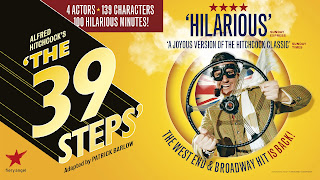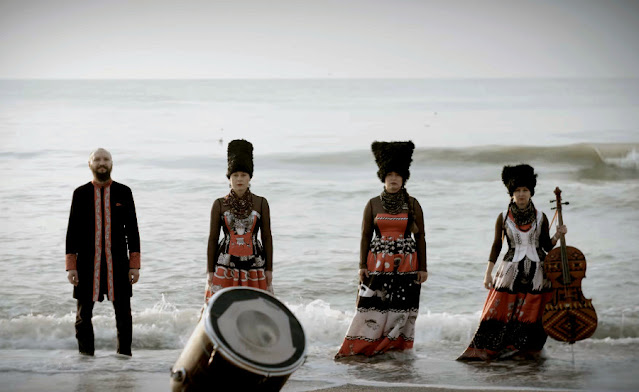LGBTQ+ representation in media and why it matters.
This month is LGBTQ+ History month and as such I think it is important to discuss representation of LGBTQ+ people in film and television. I will therefore discuss how LGBTQ+ people have been represented in the past, how they are being represented currently and why it is important to improve upon representation for the sake of LGBTQ+ people and society in general.
In the past LGBTQ+ representation has been extremely harmful. Many films and tv shows have perpetuated harmful stereotypes which has ultimately done more bad than good. Some of this is due to subconscious bias from the writers, whilst wanting to portray a LGBTQ+ person in their media, due to lack of genuine understanding they have leaned into harmful tropes such as the more recently dubbed 'Bury your gays' trope. In which a well rounded and developed LGBTQ+ person has been killed in a unnecessary and pointless way to cause drama and tension amongst the other central characters, think of Lexa from the 100 or Tara from Buffy. The deaths of these characters are not necessarily born out of the writers disliking the LGBTQ+ character they created, yet it shows subconscious bias in writers during the 2000s/2010s in terms of there being a disproportionate amount of LGBTQ+ characters being killed in relation to how many there were on TV and in comparison to how many living straight characters there were. Whilst this bias is unintentional, and the LGBTQ+ character was likely not killed in an attempt to hurt LGBTQ+ audience members, seeing a well-rounded and relatable LGBTQ+ be killed for seemingly no reason just solidifies the terrible idea that a LGBTQ+ person cannot have a happy ending which can in turn hurt the LGBTQ+ community deeply. Whilst this trope formed from subconscious bias may be bad, in the past (before the last decade) it has been far worse. LGBTQ+ characters have been stereotyped heavily, with gay men constantly being portrayed as overly flamboyant and feminine with little other personality other than being gay or with Bisexual people being portrayed simply as promiscuous and untrustworthy. Many of these stereotypes lead to people believing that LGBTQ+ people can only be one way, which has led to the dismissal of LGBTQ+ people because they don't meet stereotypes and has lead LGBTQ+ people to question themselves where they shouldn't have to. It has also stirred hatred towards certain groups with many disliking all LGBTQ+ based on the negative stereotypes associated with them as well as some LGBTQ+ people being shamed for perpetuating a stereotype, even though it is not their fault that these stereotype exists. Indeed, in the past the representation in the media has been extremely harmful for LGBTQ+ people.
Whilst it has definitely improved within the last decade LGBTQ+ representation in media is not perfect. One thing that can be highlighted is how little LGBTQ+ representation there is in blockbuster movies. If one were to think of the biggest movie franchises of the last decade or so, such as Marvel, Star Wars, Fast and Furious etc. there is little LGBTQ+ representation to be seen throughout. Indeed it was only after 25 films that Marvel introduced its first Gay character with a significant storyline (the only previous character being Joe Russo's cameo role). And even then many foreign cinemas cut around the aspects which showed him to be Gay, such as editing out any scenes of him interacting with his son and husband. But what is perhaps worse is the way in which companies virtue signal for introducing a LGBTQ+ into one of their movies, for example there having been 4 occasions in which Disney introduced their 'first' openly gay character into a movie. Indeed Disney proclaimed to introduce the first gay character in 4 separate movies so that articles could be written and the movies could get attention from LGBTQ+ and activist audiences. Yet the representation in all four of these movies accumulate to no more than a passing glance or remark that can easily be edited out for foreign audiences where homosexuality is illegal. Showing the ultimate weakness in the representation in these movies and that the introduction of Lefou being gay, for example, was to do nothing more than to maximise profit by gaining interest from LGBTQ+ people and all foreign audiences at the same time. They didn't care if LGBTQ+ people were represented in the film properly. Indeed, Eternals is perhaps the only Disney movie so far in which they can fairly claim to have an actual gay character as Phastos is at least fleshed out and his relationship with his family is central to his own storyline. Yet Disney and other blockbuster media companies continue to pedal inclusion on their social media sites, celebrating diversity, despite doing very little for LGBTQ+ people in their own media and even sometimes pushing against LGBTQ+ representation (i.e, Disney cut out the inclusion of a gay couple from Gravity Falls less than 10 years ago). This therefore is an indication that LGBTQ+ representation still has long way to go especially when it comes to representation in blockbuster movies.
Another aspect of representation that needs to be improved upon is that of the portrayal of transgender people. Currently in modern media there is very little representation at all, there certainly isn't any transgender character's in blockbuster movies and very little representation in movies in general. TV shows fair a little better, MacKenzie in Neighbours, Louis in Holby City and Nia in Supergirl are all transgender characters played by actors who are transgender. These characters seem to be good representation given that they are often portrayed as sympathetic and kind characters, who have storylines which are both about being trans and day to day struggles which are completely separate from trans issues. Yet positive representation of transgender people in media is slim and will become even slimmer given that the shows mentioned are ending or have ended. This is more so the case for non-binary people who see very little positive representation at all. Instead transgender and non-binary people, even today, are met with negative or inaccurate representation in media, often stereotyping them as untrustworthy and sometime as evil. Indeed, it is only recently that J.K. Rowling wrote a book which features a man who dresses as a woman as a deranged serial killer, and given J.K. Rowling's constant dismissal of trans identities this all seems a too deliberate way to stir up hate against non-cisgendered women. Therefore moving forward there needs to be far more positive representation of the transgender community in media and on shows which aren't just targeted towards young adults or the LGBTQ+ communities, who are already more accepting of transgender people. This is especially relevant given the rise in transphobia in the UK and that the most transphobic tweets has been identified as coming from the UK.
But why should this matter, why is it important to have positive LGBTQ+ representation and to move forward to ensure there is better representation in blockbusters or just in general? One reason is clearly because of LGBTQ+ people themselves. In recent years there has been more LGBTQ+ characters in kids cartoons and tv shows, Adventure time really being the first I can personally remember. By having LGBTQ+ characters at the centre of these cartoons and have them be the heroes, kids who are LGBTQ+ themselves and feel isolated from their peers due to such a fact can find comfort in these characters and recognise that they can be a hero just like everyone else. Being able to see representation from such a young age will often help children feel more accepted and like they belong, this is especially important as LGBTQ+ youth are 3.5 times more likely to attempt suicide than their heterosexual peers. This feeling of acceptance found in seeing a LGBTQ+ character on screen and the acceptance that comes with it can be a powerful tool in reducing the amount of suicide attempts in future LGBTQ+ teens. Furthermore not only does positive representation provide someone to identify with and help LGBTQ+ people feel more accepted but it also increases general acceptance from heterosexual people. Indeed a survey conducted by GLAAD in 2020 shows that LGBTQ+ representation increased acceptance by up to 45%. Therefore proper and positive representation in media is vastly important to create a more tolerant society which will hopefully make society more accepting of LGBTQ+ people, providing a better space for LGBTQ+ people to live in.
Indeed, positive representation is vastly important for maximising acceptance of LGBTQ+ people in society. Therefore we should target the areas in which LGBTQ+ people are being failed by mainstream media, such as their lack of appearance in blockbusters, and rid media of harmful stereotypes, as it is important not just for LGBTQ+ peoples state of mind but it is vastly important for bettering our society.





Comments
Post a Comment